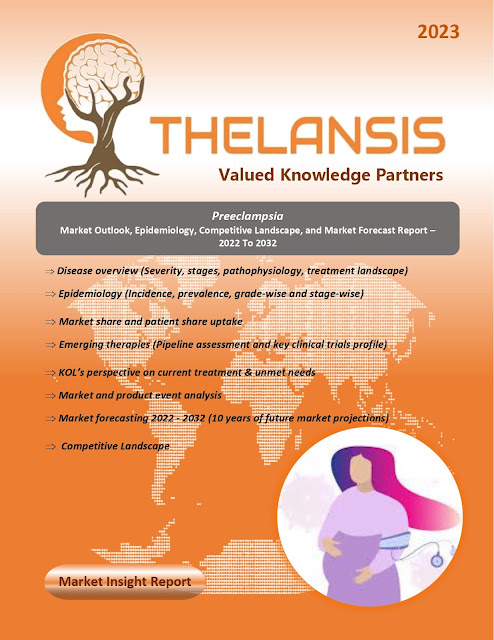Preeclampsia – Market Outlook, Epidemiology, Competitive Landscape, and Market Forecast Report – 2022 To 2032
Preeclampsia is a condition characterized by high blood pressure during pregnancy. The criteria for identifying preeclampsia initially involve a systolic blood pressure of 140 mm Hg or higher or a diastolic blood pressure of 90 mm Hg or higher, recorded on at least two occasions at least 4 hours apart. Alternatively, if the time interval is shorter, the criteria are a systolic blood pressure of 160 mm Hg or higher or a diastolic blood pressure of 110 mm Hg or higher. All of these measurements must be made after 20 weeks of gestation. While there is a comprehensive understanding of how preeclampsia is clinically presented, diagnosed, and managed as part of routine practice, the underlying causes remain unclear. A prevalent explanation for preeclampsia involves abnormal placentation, which triggers significant dysfunction in the mother's body. Despite challenges, abnormal placentation remains a well-supported cause of preeclampsia, leading to unusual remodeling of spiral arteries, placental ischemia, hypoxia, and oxidative stress. Conditions that share symptoms with preeclampsia can also inadvertently increase the risk of developing it. These include chronic hypertension, gestational hypertension, antiphospholipid antibody syndrome, thrombotic microangiopathies, lupus, epilepsy, or seizure disorders. In preeclamptic patients, delaying the delivery of the fetus during the late preterm phase raises the likelihood of severe hypertension. This, in turn, can result in serious complications like eclampsia, HELLP syndrome, pulmonary edema, myocardial infarction, acute respiratory distress syndrome, stroke, renal and retinal damage, and fetal issues such as growth restrictions, placental abruption, and fetal or maternal death. The management of preeclampsia begins with early diagnosis and intervention, focusing on maintaining appropriate blood pressure levels and preventing seizures. Blood pressure control can be accomplished by using medications like beta-blockers (e.g., labetalol) or calcium channel blockers (e.g., nifedipine).
·
Preeclampsia is responsible for approximately
10 to 15 percent of maternal fatalities across the globe.
Thelansis’s “Preeclampsia Market
Outlook, Epidemiology, Competitive Landscape, and Market Forecast Report – 2022
To 2032" covers disease overview, epidemiology, drug utilization,
prescription share analysis, competitive landscape, clinical practice,
regulatory landscape, patient share, market uptake, market forecast, and key
market insights under the potential Preeclampsia treatment modalities options
for eight major markets (USA, Germany, France, Italy, Spain, UK, Japan, and
China).
KOLs insights
of Preeclampsia across 8 MM market from the centre of Excellence/ Public/
Private hospitals participated in the study. Insights around current treatment
landscape, epidemiology, clinical characteristics, future treatment paradigm,
and Unmet needs.
Preeclampsia Market Forecast Patient
Based Forecast Model (MS. Excel Based Automated Dashboard), which Data Inputs
with sourcing, Market Event, and Product Event, Country specific Forecast
Model, Market uptake and patient share uptake, Attribute Analysis, Analog
Analysis, Disease burden, and pricing scenario, Summary, and Insights.
Thelansis Competitive Intelligence (CI) practice
has been established based on a deep understanding of the pharma/biotech
business environment to provide an optimized support system to all levels of
the decision-making process. It enables business leaders in forward-thinking
and proactive decision-making. Thelansis supports scientific and commercial
teams in seamless CI support by creating an AI/ ML-based technology-driven
platform that manages the data flow from primary and secondary sources.




Comments
Post a Comment